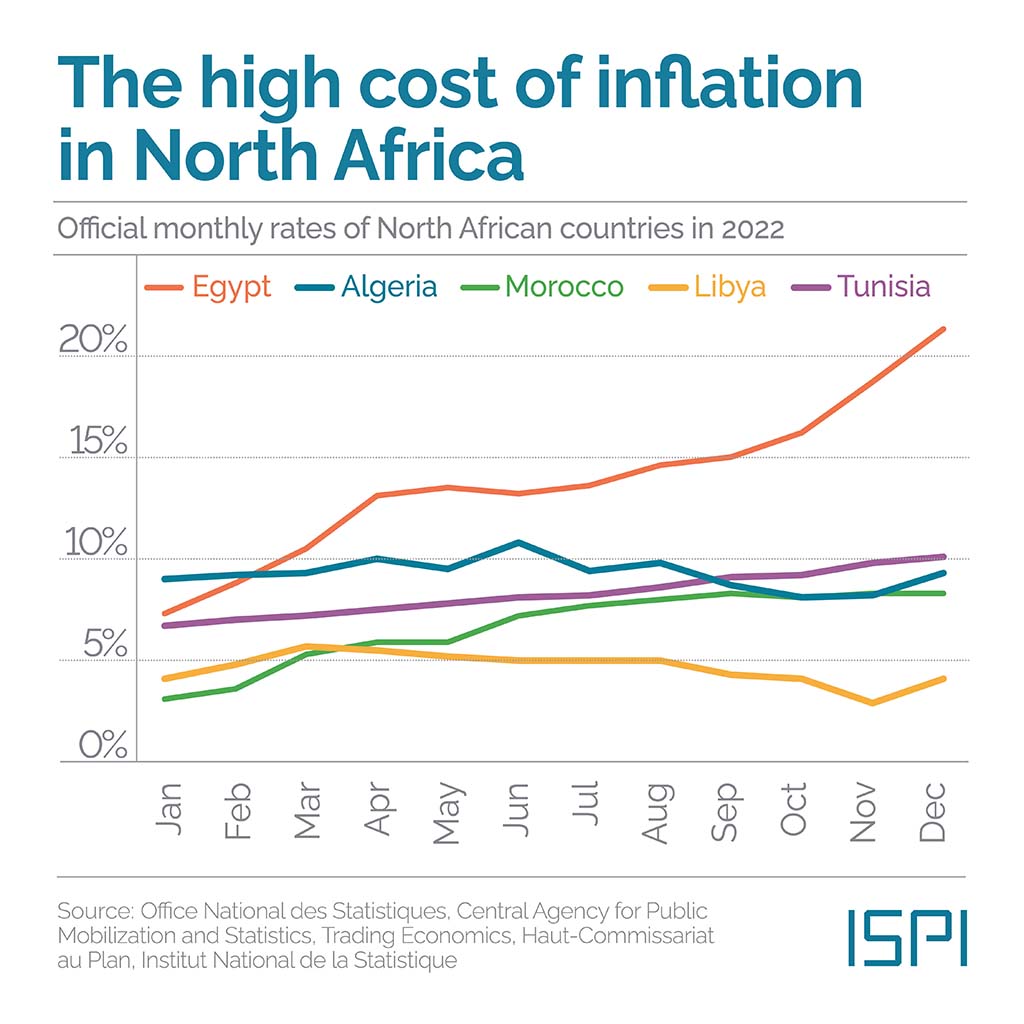Analysis of Social Cohesion and Racial Tensions in the United Kingdom
Introduction: The Southport Riots and Sustainable Development Goal Implications
- One year after the Southport attack, an analysis of the subsequent riots reveals significant challenges to the UK’s progress on the Sustainable Development Goals (SDGs).
- The events, characterized by racially and religiously motivated violence, directly undermine SDG 16 (Peace, Justice and Strong Institutions) by disrupting public peace and order.
- Fueled by false claims targeting the Muslim community, the riots underscore a critical failure in achieving inclusive societies, a core tenet of SDG 10 (Reduced Inequalities).
- Attacks on mosques, homes, and businesses represent a threat to SDG 11 (Sustainable Cities and Communities), which aims to make settlements inclusive, safe, and resilient.
Historical Context and Systemic Challenges to SDG 10 (Reduced Inequalities)
Legacy of Racial Violence
- Current tensions are rooted in a historical context of racial violence, including periods of “Paki bashing” where minority communities were systematically targeted.
- These assaults, which included knife attacks and fire bombings, represent a severe violation of human security and impede the goal of reducing inequality under SDG 10.
- The presence of far-right groups demanding repatriation of non-white citizens constitutes a direct assault on the principles of inclusion and diversity central to the 2030 Agenda.
- Attacks on businesses owned by minority groups also hinder progress on SDG 8 (Decent Work and Economic Growth) by creating economic instability and exclusion.
Discrimination in Educational and Community Settings
- Reports indicate a history of racism within educational environments, including physical attacks and racist chanting in schools and playgrounds.
- Such environments compromise the objective of SDG 4 (Quality Education), which requires that learning settings be safe, non-violent, and inclusive for all students.
- The formation of community defense groups, such as the Bradford 12, points to a perceived failure of state institutions to provide protection, a key indicator related to SDG 16.
The Role of Political Discourse and Institutions in Relation to SDG 16
Erosion of Institutional Integrity
- A notable shift has occurred in political discourse, with mainstream political figures increasingly adopting rhetoric previously associated with the far-right.
- This trend weakens the “strong institutions” component of SDG 16 by legitimizing divisive and discriminatory language.
- Statements from high-level officials, such as the former Home Minister’s claims regarding “British Pakistani males,” exacerbate social divisions and contravene the anti-discrimination targets of SDG 10.
Rise of Far-Right Politics and Islamophobia
- Islamophobia has emerged as a particularly virulent form of discrimination, replacing older forms of racism.
- The growing electoral support for parties with strong anti-migrant and Islamophobic platforms, such as the Reform Party, presents a direct threat to the goal of building peaceful and inclusive societies (SDG 16).
- This political climate fosters an environment where racism is normalized, undermining decades of progress toward social cohesion.
Broader Implications and Connections to Global Goals
Public Perception and Media Framing
- A poll by The Economist highlights public anxiety and division, posing challenges to SDG implementation.
- Finding 1: Nearly 50% of the UK population reportedly believe multiculturalism is not beneficial, indicating a significant barrier to achieving the societal inclusion goals of SDG 10.
- Finding 2: An overwhelming majority (73%) expect more “race riots,” reflecting a lack of public confidence in the nation’s ability to maintain peace and justice as per SDG 16.
Linkages to Imperial History and Foreign Policy
- Current domestic racism is linked to the UK’s imperial history, which normalized ideologies of racial hierarchy to justify colonial rule.
- These historical frameworks are seen as influencing contemporary foreign policy, including the UK’s political and military support for Israel’s actions in Gaza.
- This creates a policy incoherence, where domestic commitments to peace and equality (SDG 10, SDG 16) appear at odds with international actions, affecting the integrity of the UK’s commitment to the global 2030 Agenda.
Conclusion: Pathways to Achieving Inclusive and Peaceful Societies (SDG 16 & SDG 17)
The Imperative of Solidarity and Collective Action
- Addressing the rise of racism and social division requires broad-based mobilization and solidarity among people of all backgrounds and beliefs.
- This form of collective action is a practical application of SDG 17 (Partnerships for the Goals), leveraging civil society partnerships to achieve social objectives.
- Such solidarity is essential for challenging divisive political narratives, countering misinformation, and preventing the further erosion of social cohesion, thereby advancing the vision of a just, peaceful, and inclusive society outlined in the Sustainable Development Goals.
1. Which SDGs are addressed or connected to the issues highlighted in the article?
The article highlights issues of racism, violence, discrimination, and political division, which directly connect to the following Sustainable Development Goals (SDGs):
-
SDG 10: Reduced Inequalities
This goal is central to the article, which extensively discusses inequalities based on race, religion, and origin. The text describes historical and contemporary racism, such as “Paki bashing,” and the rise of Islamophobia. It points to the social and political exclusion of minority groups, particularly Muslims and people of non-white descent, fueled by discriminatory rhetoric from political figures.
-
SDG 16: Peace, Justice and Strong Institutions
This goal is addressed through the article’s focus on violence, safety, and the failure of political institutions. The “furious racist riots,” attacks on mosques and individuals, and the author’s personal experience of violence directly relate to the need for peaceful and inclusive societies. Furthermore, the critique of the political class for adopting far-right rhetoric and the mention of “a complex web of political corruption” point to a lack of effective, accountable, and inclusive institutions.
2. What specific targets under those SDGs can be identified based on the article’s content?
Based on the issues discussed, the following specific targets can be identified:
-
SDG 10: Reduced Inequalities
- Target 10.2: By 2030, empower and promote the social, economic and political inclusion of all, irrespective of age, sex, disability, race, ethnicity, origin, religion or economic or other status.
Explanation: The article directly contravenes this target by describing a society where individuals are targeted and excluded based on their perceived religion (Muslims) and race. The narrative of “Paki bashing,” riots against specific communities, and political rhetoric promising to “crack down” on asylum seekers illustrate a failure to ensure the inclusion of all. - Target 10.3: Ensure equal opportunity and reduce inequalities of outcome, including by eliminating discriminatory laws, policies and practices and promoting appropriate legislation, policies and action in this regard.
Explanation: The article implies that current political practices are discriminatory. It cites Home Minister Suella Braverman’s false claims about “British Pakistani males” and the general trend of mainstream politicians echoing “far-right rhetoric.” This suggests that policies and public discourse are creating, rather than eliminating, inequalities of outcome for minority groups.
- Target 10.2: By 2030, empower and promote the social, economic and political inclusion of all, irrespective of age, sex, disability, race, ethnicity, origin, religion or economic or other status.
-
SDG 16: Peace, Justice and Strong Institutions
- Target 16.1: Significantly reduce all forms of violence and related death rates everywhere.
Explanation: The article is replete with examples of violence, including “racist riots,” “attacking mosques, Muslim-owned businesses, homes, and individuals,” “Knife attacks and fire bombings,” and “hand-to-hand fighting.” These events represent a direct failure to achieve this target within the context of the UK. - Target 16.7: Ensure responsive, inclusive, participatory and representative decision-making at all levels.
Explanation: The article critiques the UK’s ruling political class as being non-responsive and non-inclusive. It states that both Labour and Conservative leaders “echo far-right rhetoric,” failing to represent the interests of minority communities. This has led to a breakdown in trust and the rise of the Reform Party, indicating a crisis in representative decision-making. - Target 16.b: Promote and enforce non-discriminatory laws and policies for sustainable development.
Explanation: The article suggests a political environment that fosters discrimination rather than combats it. The mainstreaming of “anti-migrant and Islamophobic tropes” by political parties is the opposite of promoting and enforcing non-discriminatory policies.
- Target 16.1: Significantly reduce all forms of violence and related death rates everywhere.
3. Are there any indicators mentioned or implied in the article that can be used to measure progress towards the identified targets?
Yes, the article mentions or implies several quantitative and qualitative indicators:
-
Indicators for SDG 10 (Reduced Inequalities)
- Perception of discrimination and social cohesion: The article cites an Economist poll showing that “nearly 50 percent of the population think that multiculturalism is not good for the country.” This is a direct indicator of public attitudes towards diversity and inclusion (related to Target 10.2).
- Prevalence of discriminatory political rhetoric: The article provides specific examples of discriminatory language from high-level politicians, such as Suella Braverman’s comments on “British Pakistani males” and the general promise to “crack down” on asylum seekers. Tracking the frequency and nature of such statements can serve as an indicator of progress (or regression) on Target 10.3.
-
Indicators for SDG 16 (Peace, Justice and Strong Institutions)
- Incidence of hate-motivated violence and conflict: The article describes the “Southport attack, which triggered furious racist riots.” The occurrence of such riots, along with attacks on mosques and individuals, serves as a direct indicator for Target 16.1.
- Public perception of future violence: The Economist poll finding that “73 percent thought more ‘race riots’ will happen soon” is a powerful indicator of the perceived lack of peace and safety in society (related to Target 16.1).
- Support for far-right political parties: The article provides a specific data point: the Reform Party is “at the top of polls, with 30 percent of voters supporting it.” This percentage serves as a quantifiable indicator of the public’s disillusionment with mainstream institutions and the appeal of divisive ideologies (related to Target 16.7).
4. Table of SDGs, Targets, and Indicators
| SDGs | Targets | Indicators Identified in the Article |
|---|---|---|
| SDG 10: Reduced Inequalities |
10.2: Promote social, economic and political inclusion of all, irrespective of race, ethnicity, origin, religion, etc.
10.3: Ensure equal opportunity and reduce inequalities of outcome by eliminating discriminatory policies and practices. |
– Poll result: “nearly 50 percent of the population think that multiculturalism is not good for the country.”
– Prevalence of discriminatory rhetoric from political leaders (e.g., claims about “British Pakistani males,” promises to “crack down” on asylum seekers). |
| SDG 16: Peace, Justice and Strong Institutions |
16.1: Significantly reduce all forms of violence.
16.7: Ensure responsive, inclusive, and representative decision-making. 16.b: Promote and enforce non-discriminatory laws and policies. |
– Reports of “furious racist riots,” “attacking mosques,” “Knife attacks and fire bombings.”
– Poll result: “73 percent thought more ‘race riots’ will happen soon.” – Poll result: “30 percent of voters supporting [the Reform party].” |
Source: aljazeera.com







